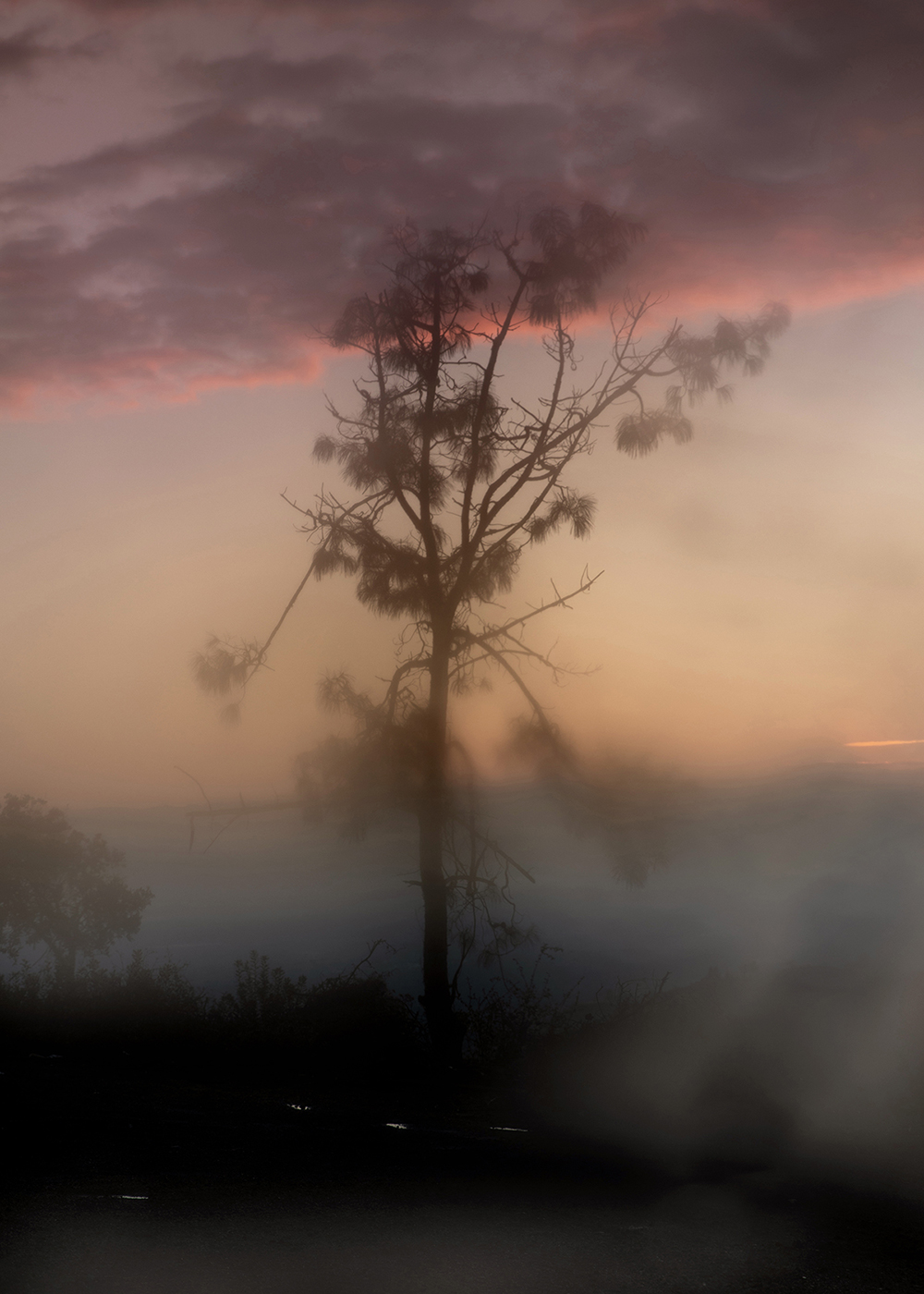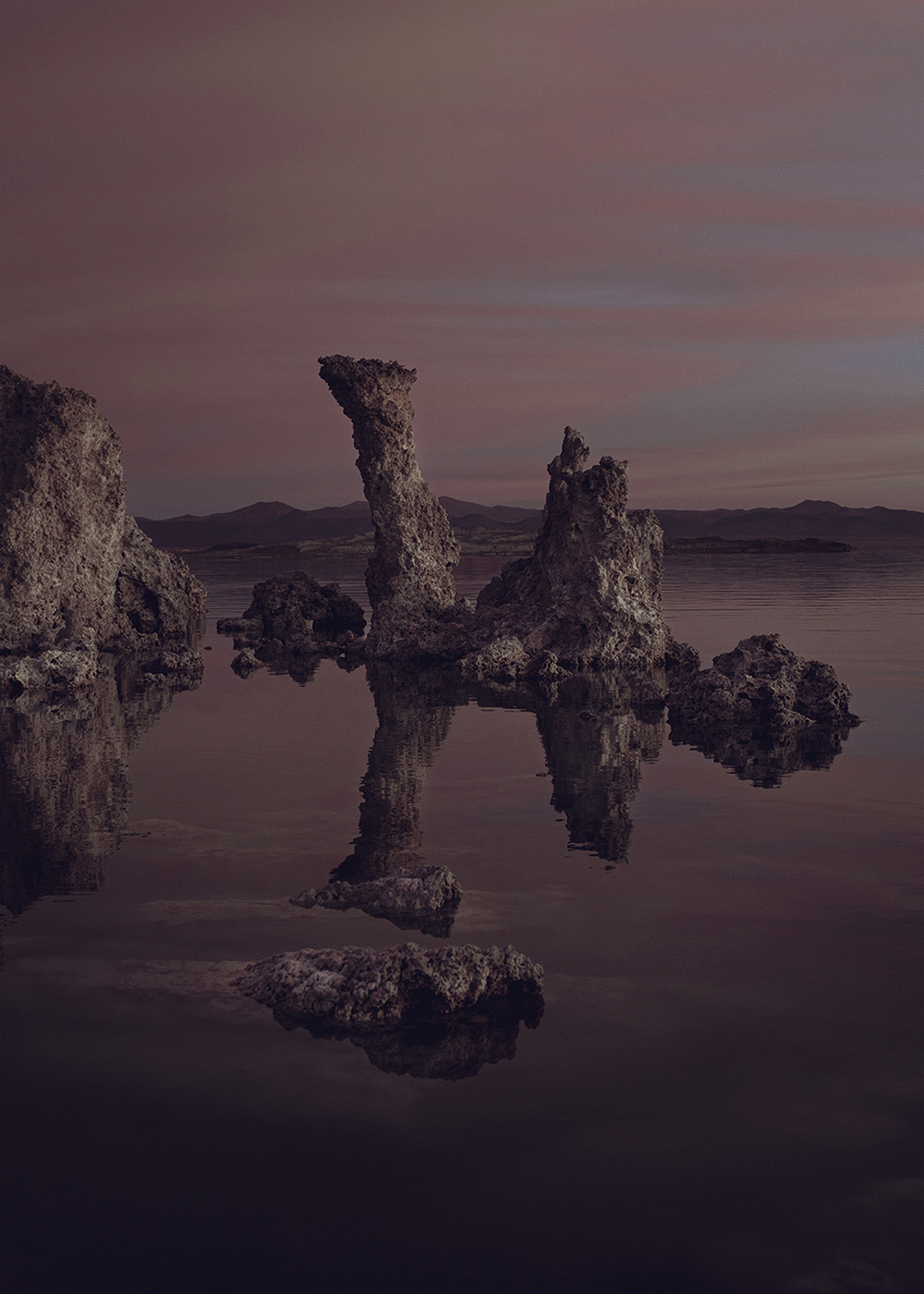Name
Delaney Allen
Title ︎︎︎ Strange Nature
Photography can render the world strange and familiar. Here is the tryst of classic landscape photographs of the American West: only by visually colonising the territory can the territory be conserved. But conserved from what? The ‘New Topographics’ photographers of the 1970s rebuked the Masters with their pictures of the encroaching junkscape; a manifest domesticity of lots, suburbs, trucks and stripmalls. What is familiar is known. What is strange soon enough becomes known. Irreducible strangeness is potentially so disruptive that it is often dismissed as anomaly. In our desire to map, use and control we domesticate strangeness.
Delaney Allen’s images offer the strangeness of nature as a revelation. Each image, an extraordinary anomaly before us, cannot be glossed over. Frosted crystalline twists. Quivering films. Corrugated ragged splashes. Sulphuric vapors. Refracted speleothems. Frothy skeins. From the instantaneous to the aged, Allen attends to physical processes of natural growth and form in the American West. Explosive veils of sand express some unseen force. Geological time forms globular stalactites.
Art photographers of our junked planet have attempted to visualize the disappearance of the human, a minute span against the long duration of geologic time. Certainly Allen’s depopulated photographs share an alien, hyperreal quality, but it’s hard to reconcile this with their explicit constructedness. Each phenomena – each cactus, gorge or icicle – is, as Allen states, stumbled upon, found imagery out in the world selected for their sculptural qualities. Readymades, he calls them.
Implicit in Marcel Duchamp’s readymade is the sense of the photographic: he referred to them as his instantanés (snapshots) which translated into the third dimension a photographic principle of selection and re-presentation. Later, in the 1960s, the impersonal photograph became a prime tool for the documentation of expanded concepts of sculpture. Robert Smithson’s A Tour of the Monuments of Passaic, New Jersey (1967) is a classic work of sculpture by which the only thing guaranteeing the event’s endurance are the photographs themselves.
What is strange in nature is also photography itself. Underlying this work is a formalist desire to explore this nature, to achieve a purification of process investigating the characteristics of the medium. Allen’s concern is less with documenting an external world than with the discovery of images working with the phenomena and the technological means of the medium. Techniques such as colored gels. Long lenses that collapse foreground/background. Inversions of color and horizon. These photographs flicker between representation and abstraction. Vividness and ambiguity of scale perhaps account for their virtuality: seamless and scaleless, mobile and contextless, we might be viewing them as if on a screen.
These photographs represent things from the world. There is a referent. Allen, however, uses these techniques to abstract these things from their referent. Introducing visual equivalences between photographs – similitudes – further unmoors these phenomena from their referent. Spiky forms of gurgling sea find an equivalent in stalagmites. One and three forms of hydrogen: A geyser’s expulsion is a whipped cloud; How does it become ice? Perceptual ambiguity is central to what makes photography a surreal medium.
There is a sense in Allen’s work that the world is given-to-be-photographed, constituted by and through images. Paradoxically, for Allen the moment of photography is not a moment of domestication or human obliteration. Using photographic techniques he makes stranger what is already strange. He wants nothing more than to refresh our perception of the American West.
Written by Jonathan P. Watts
Delaney Allen’s images offer the strangeness of nature as a revelation. Each image, an extraordinary anomaly before us, cannot be glossed over. Frosted crystalline twists. Quivering films. Corrugated ragged splashes. Sulphuric vapors. Refracted speleothems. Frothy skeins. From the instantaneous to the aged, Allen attends to physical processes of natural growth and form in the American West. Explosive veils of sand express some unseen force. Geological time forms globular stalactites.
Art photographers of our junked planet have attempted to visualize the disappearance of the human, a minute span against the long duration of geologic time. Certainly Allen’s depopulated photographs share an alien, hyperreal quality, but it’s hard to reconcile this with their explicit constructedness. Each phenomena – each cactus, gorge or icicle – is, as Allen states, stumbled upon, found imagery out in the world selected for their sculptural qualities. Readymades, he calls them.
Implicit in Marcel Duchamp’s readymade is the sense of the photographic: he referred to them as his instantanés (snapshots) which translated into the third dimension a photographic principle of selection and re-presentation. Later, in the 1960s, the impersonal photograph became a prime tool for the documentation of expanded concepts of sculpture. Robert Smithson’s A Tour of the Monuments of Passaic, New Jersey (1967) is a classic work of sculpture by which the only thing guaranteeing the event’s endurance are the photographs themselves.
What is strange in nature is also photography itself. Underlying this work is a formalist desire to explore this nature, to achieve a purification of process investigating the characteristics of the medium. Allen’s concern is less with documenting an external world than with the discovery of images working with the phenomena and the technological means of the medium. Techniques such as colored gels. Long lenses that collapse foreground/background. Inversions of color and horizon. These photographs flicker between representation and abstraction. Vividness and ambiguity of scale perhaps account for their virtuality: seamless and scaleless, mobile and contextless, we might be viewing them as if on a screen.
These photographs represent things from the world. There is a referent. Allen, however, uses these techniques to abstract these things from their referent. Introducing visual equivalences between photographs – similitudes – further unmoors these phenomena from their referent. Spiky forms of gurgling sea find an equivalent in stalagmites. One and three forms of hydrogen: A geyser’s expulsion is a whipped cloud; How does it become ice? Perceptual ambiguity is central to what makes photography a surreal medium.
There is a sense in Allen’s work that the world is given-to-be-photographed, constituted by and through images. Paradoxically, for Allen the moment of photography is not a moment of domestication or human obliteration. Using photographic techniques he makes stranger what is already strange. He wants nothing more than to refresh our perception of the American West.
Written by Jonathan P. Watts
Click ︎









